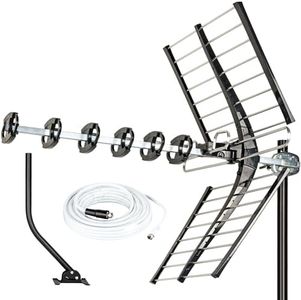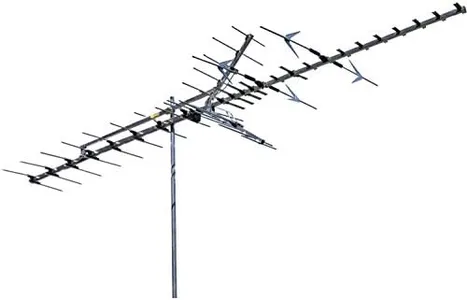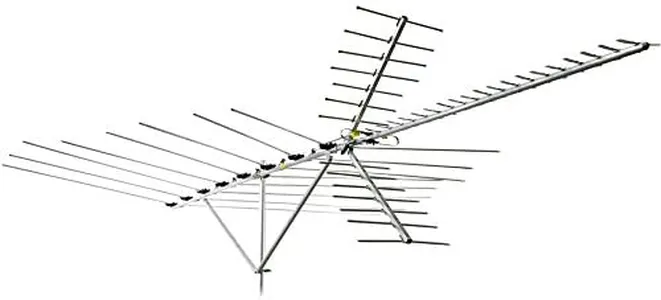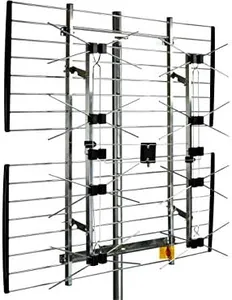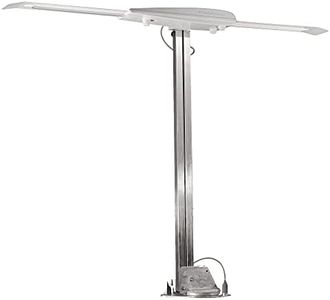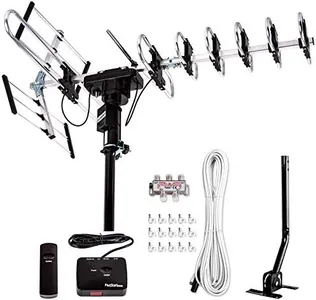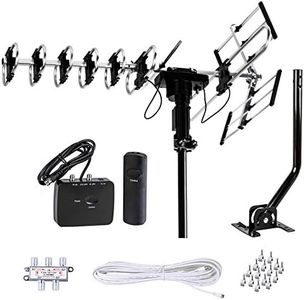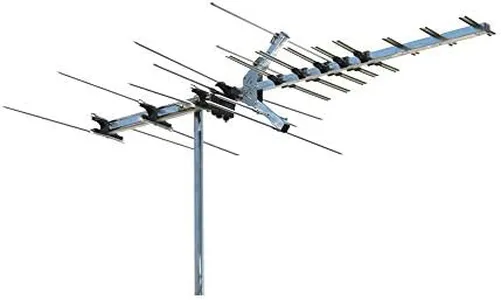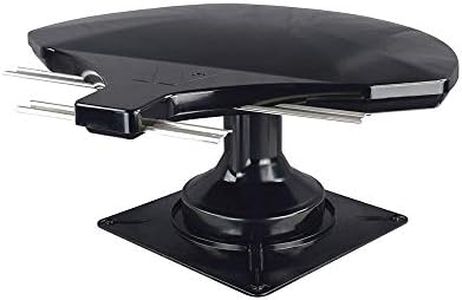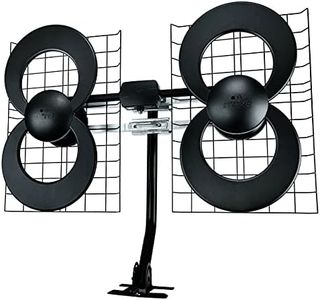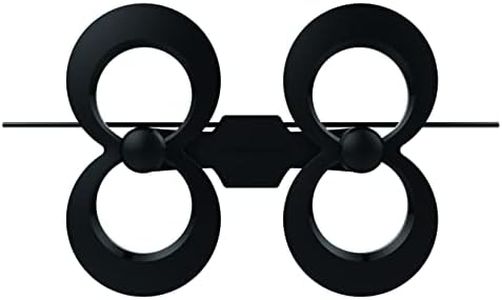10 Best Digital TV Antennas 2025 in the United States
Our technology thoroughly searches through the online shopping world, reviewing hundreds of sites. We then process and analyze this information, updating in real-time to bring you the latest top-rated products. This way, you always get the best and most current options available.

Our Top Picks
Winner
Winegard HD7698A Long Range Outdoor HDTV Antenna - 65+ Mile Range, High-VHF/UHF, 4K Ultra-HD Ready, Free Local Channels, Amplify with Boost XT LNA-200
Most important from
476 reviews
The Winegard HD7698A Long Range Outdoor HDTV Antenna is a highly capable option for those in rural or suburban areas looking for a reliable way to receive both High-VHF and UHF digital TV signals. With a 65+ mile range, this antenna is designed to capture clear local channels even in remote locations. It's an outdoor, multi-directional antenna, meaning it can pick up signals from multiple directions, reducing the need for constant repositioning.
Additionally, it's 4K Ultra-HD and ATSC 3.0 ready, ensuring you're set for future broadcasting advancements. One of the key strengths of this antenna is its ability to provide free TV programming, including local news, weather, live sports, and popular shows without a subscription. The option to pair it with the Winegard Boost XT LNA-200 amplifier can further enhance range and signal reliability.
However, being an outdoor model, it requires installation outside your home, which might be challenging for some users. It's also a larger unit, measuring 168.25 x 53.5 x 33 inches and weighing around 14 pounds, so ensuring it has a suitable mounting location is necessary. Designed and manufactured in the USA by Winegard, a trusted name in the industry, this antenna is a solid investment for those needing a robust solution for digital TV reception.
Most important from
476 reviews
Channel Master Advantage 100 Directional Outdoor TV Antenna - Long Range FM, VHF, UHF and Digital HDTV Aerial - CM-3020
Most important from
992 reviews
The Channel Master Advantage 100 Directional Outdoor TV Antenna (CM-3020) is a solid option for those looking to enhance their TV reception over long distances. With a maximum range of 100 miles, this antenna can pull in signals from far away, especially when paired with an amplifier and proper installation height. It is designed to receive a wide array of frequencies, including Low VHF, High VHF, UHF, and FM, making it versatile for picking up various channels like CBS, FOX, ABC, NBC, PBS, Univision, and Telemundo.
This antenna is future-proof as it supports ATSC 3.0 and 4K broadcasts when they become available, ensuring you won't need to upgrade anytime soon. The high gain performance, with 8.6 dB for VHF and 9.5 dB for UHF, enhances signal strength, particularly in weak signal locations. Constructed with durable materials, it's built to withstand harsh outdoor conditions. However, the need to purchase a mast and coaxial cable separately could be a downside for some users.
While installation is straightforward with included U-bolt mounting hardware and a step-by-step guide, the antenna's weight (nearly 10 pounds) might make it a bit cumbersome to install alone. With its reliable reception and easy installation, the Channel Master Advantage 100 is suitable for those needing a robust outdoor antenna for long-range TV signals.
Most important from
992 reviews
Channel Master EXTREMEtenna - Multi-Directional Outdoor HDTV Digital Antenna, 80+ Mile Range, 8-Bay Bowtie, 180° Wide-Angle Reception, Industry-Leading Reception Power, UHF/VHF Support for Free OTA TV
Most important from
2462 reviews
The Channel Master EXTREMEtenna is a solid choice for those looking to cut cable costs and access free HDTV channels. With an impressive 80-mile range, it's well-suited for users in both urban and rural areas, as long as they have a clear line of sight. Its multi-directional capabilities (180-degree reception span) mean you don’t have to constantly adjust the antenna to get a good signal, which is a notable convenience.
The antenna supports uncompressed 1080i HDTV broadcasts, ensuring high-quality video and audio that rivals cable and satellite services. The fact that it comes preassembled and includes mounting hardware adds to its user-friendly setup, although you will need to purchase a mast and coaxial cable separately. Being designed for outdoor use, you can install it in various locations like the rooftop, chimney, or even an attic, providing flexibility based on your setup preferences.
The compact size also aids in easier installation and less intrusion visually. Weighing in at 10 pounds, it's relatively lightweight but still sturdy. On the downside, it might be overkill for users in strong signal areas who don’t need such a long range. Additionally, the need to purchase extra components like mast and coaxial cable could be a minor inconvenience. This antenna is ideal for someone in need of a robust, long-range, multi-directional outdoor antenna and doesn’t mind a bit of extra setup to enjoy free, high-quality TV broadcasts.
Most important from
2462 reviews
Buying Guide for the Best Digital TV Antennas
Choosing the right digital TV antenna can significantly enhance your viewing experience by providing access to a wide range of channels with clear reception. The key to selecting the best antenna for your needs is understanding the various specifications and how they relate to your specific situation. Here are the key specs to consider when choosing a digital TV antenna and how to navigate them to find the best fit for you.FAQ
Most Popular Categories Right Now
